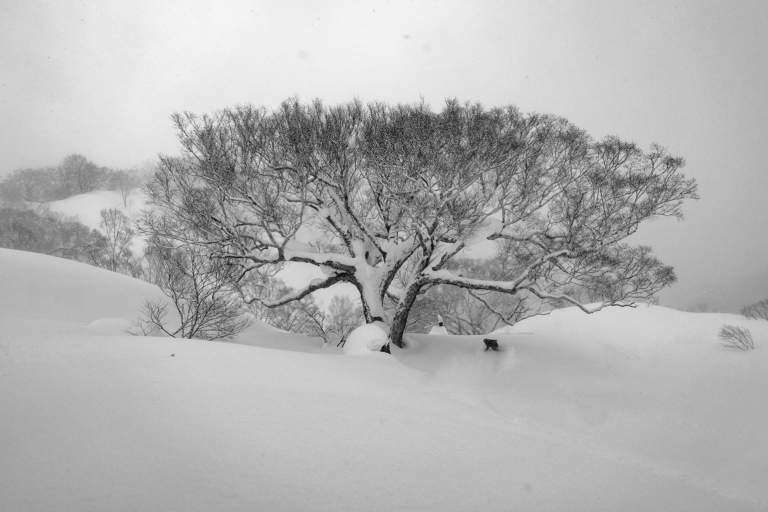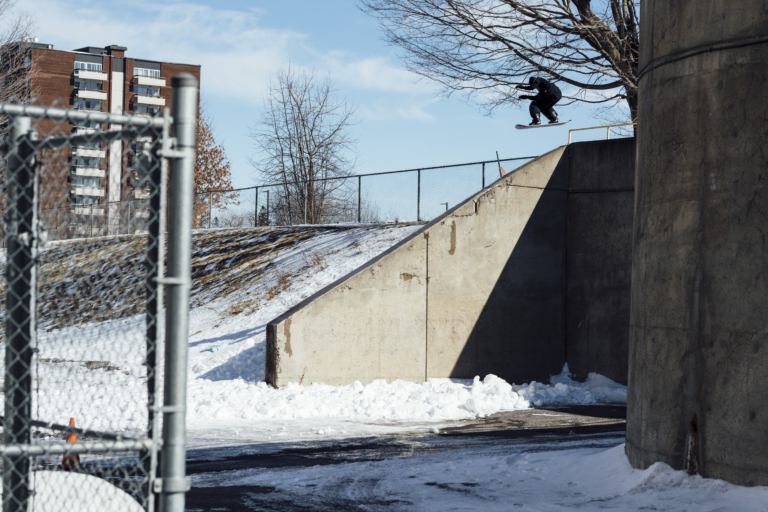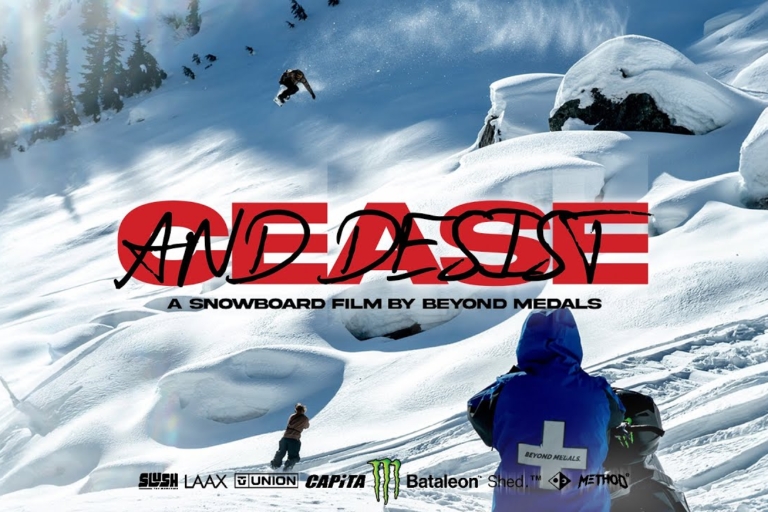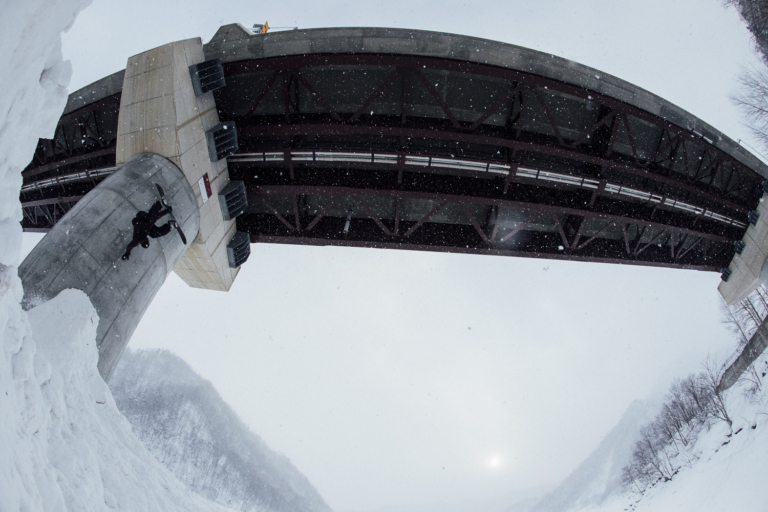IN 2017 I STOOD IN THE UINTA MOUNTAINS AND LISTENED AS THE AIR WAS SUCKED AWAY INTO THE MUFFLED ROAR OF AN AVALANCHE. The snow cracked in a shaky line an inch away from the nose of my snowboard but left me, nestled within a group of trees, untouched. Instinctively, I dropped my camera and reached out to grab a branch to steady myself, though my hand found nothing and I wasn’t moving. In a matter of seconds, the slide was over. I blinked, looked twice up at the crown of the avalanche to address the situation above, and pointed it downhill to find my friend.
Over the next nine or so hours, I worked in tandem with my crew to rescue two of our party. The threat of fear—and the very real reasons to feel that way—were the only constant, but were kept at bay by the focus needed to take deliberate steps to get everyone to safety. There was no place for fear in the equation. Jeremy was badly injured and our remote setting forced us to jump through hoop after hoop—rapidly waning sun, no cell phone service or sat phone, the cat that had gotten us into the mountains completely broke down. In the end, three of us moved as fast as we could on foot to reach the trailhead shortly before midnight and finally called search and rescue, while Jeremy’s constitution and mental fortitude provided the strength for a full recovery.
I had zero fear that day beyond a split second of initial terror when the snow cracked. Yes, it was, without a doubt, one of the scariest situations I have ever been in. At the time, we didn’t know the extent of our friends’ injuries, which is a terrifying concept. We didn’t know how long it would take us to get out of the mountains and get to help. We didn’t know what would happen. But in serious situations, just like for the others in my crew that day and for many of us that spend our time in scenarios with an element of risk, my brain works in its most calm, smooth, and effective zone. In high-stress scenarios with real, real consequences, I can slow down and see clearly; I move from step to step with focus and precision. In addition to our evolutionary will to survive, much of this is preparation—the work one does before going into the backcountry through study, practice, and prior experience—along with familiarity with high-stress scenarios of varying degrees of lesser consequence. The end result is an ability to be sharp on what matters and compartmentalize any stress, fear, and anxiety that will get in the way of your ability to function as you move toward your desired outcome.
On the flip side, while I feel a balance in the mountains that allows me to think clearly when it matters most, small everyday life things cause me loads of nervousness and consternation. I’m talking about the kind of things that keep you up worrying at night but sound ridiculous to say outloud. Did I say the wrong thing? Did I hurt someone’s feelings without meaning to? Did I make a terrible mistake? (Terrible, in this instance, is totally non-consequential and in the greater scheme, utterly small.) That kind of anxiety—the kind that is so far from life or death that it is hard to squelch and escape—well, I’m still learning how to find the same kind of calm in that.
Snowboarding not only requires that we face our fear, it demands that we form a functioning, symbiotic relationship with it. And it compels this at all levels: Your every day at your home resort may be a far cry from standing on an Alaskan ridge line, but the feelings in both instances are rooted in the same thing: a sliding scale in between fear and exhilaration that we’re constantly navigating. When first learning to snowboard, we all have felt scared when going too fast down a blue trail—something that is benign with more experience. Learning a new trick or taking a familiar one to a gnarlier set up will always be nerve-wracking as we have an awareness of the consequences of falling—however likely or not. These are only two examples, but as our skills on our snowboard improve, things that were once frightening become rote and we move onto harder terrain and tricks, embracing the intimidation and finding the capacity to try something new, because in this process is an intoxication that keeps us coming back for more.
Certainly, fear is not black and white, it is a rainbow of feelings and sensations, and developing a familiarity—a comfort with it, almost—allows us to push past what we thought possible and achieve great things. This extends beyond the mountains, of course—and while I’m definitely not a neuroscientist or psychologist, it seems safe to say that the ways we interact with fear while on board are woven through our lives off our boards, as well, informing how we move through life in so many capacities.
In the following weeks we will be sharing six stories from Snowboard Mag issue 19.2 that made up the Fear Feature. The stories belong to six snowboarders whose abilities to embrace what intimidates them and find clarity in the mountains has elevated them to the top of our sport. Elena Hight, Nils Mindnich, Leanne Pelosi, Pat Moore, Kimmy Fasani, and Austin Smith share their perspectives on fear in different parts of their lives: How they face it, how they interact with it, how they work in tandem with its schema of sensation in order to keep going forward.
— Mary T. Walsh






